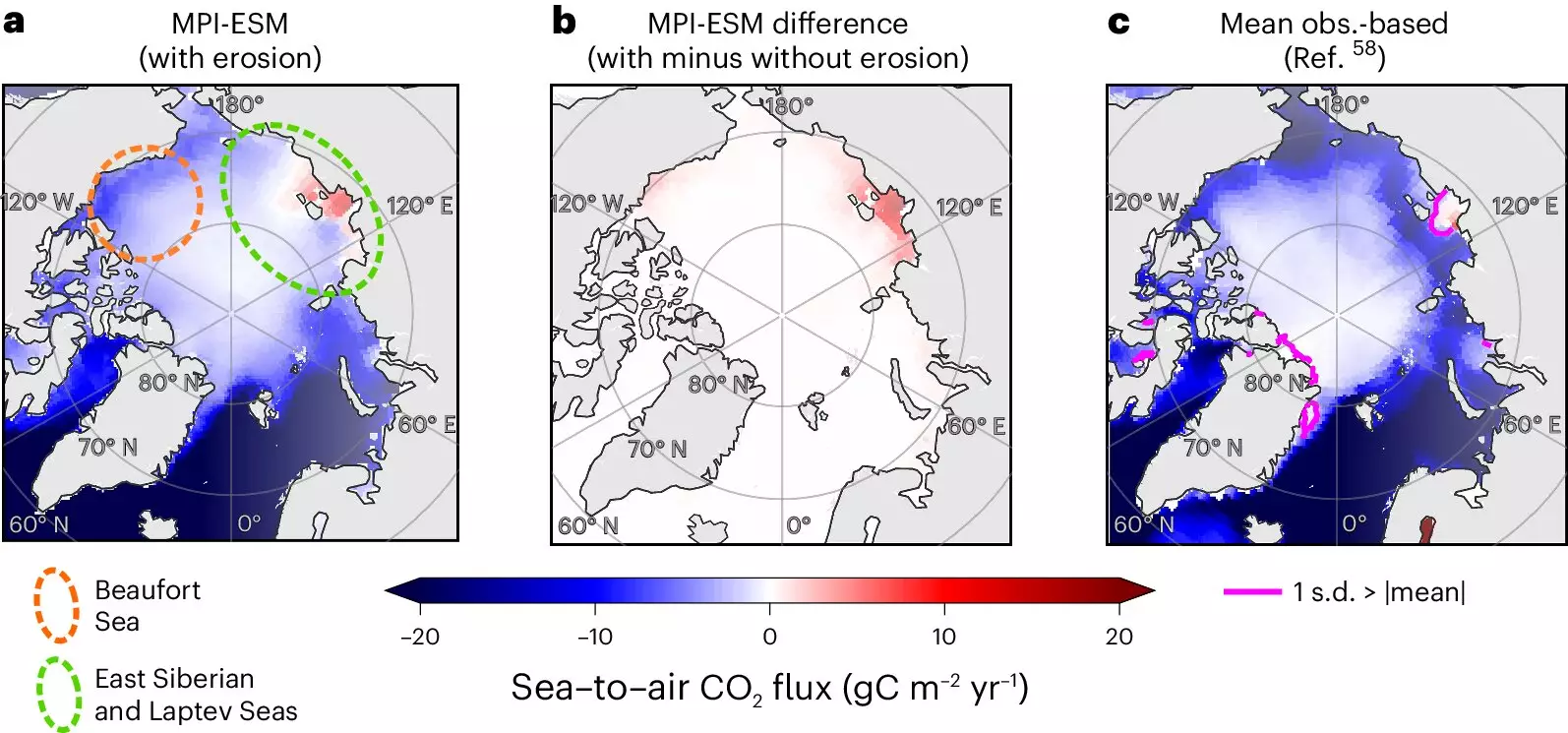The challenges posed by climate change extend beyond rising temperatures; they also include significant transformations within our planet’s ecosystems. One of the most alarming findings from recent studies is the diminished capacity of the Arctic Ocean to absorb carbon dioxide (CO2) due to ongoing permafrost melting and coastal erosion. A recent article published in Nature Climate Change highlights the alarming trends regarding the Arctic’s capacity to act as a carbon sink—a vital ecological function that helps mitigate climate change. According to the research, the Arctic could contribute substantially to an increase in atmospheric CO2 levels by the year 2100, potentially matching 10% of the car emissions produced in Europe as of 2021.
David Nielsen, the study’s lead author from the Max Planck Institute for Meteorology, emphasized the implications of this decline in absorption capabilities. The research marks the first instance of quantifying the adverse effect of coastal erosion on the Arctic Ocean’s CO2 uptake, and the conclusion is undeniably concerning. As the permafrost—once a stable reservoir for carbon—starts to thaw due to rising temperatures, the trapped carbon is released back into the atmosphere, creating a potentially vicious cycle of warming.
Permafrost, defined as soil that remains frozen for extended periods, acts as a significant carbon reserve. Alarmingly, it is estimated that the carbon stored in permafrost is 2.5 times that of the current level in the atmosphere. The research indicates that the erosion of coastal permafrost is progressing at an accelerating rate; projections suggest that this rate could increase by two to three times by the end of the century. This acceleration primarily stems from human-driven climate change, which impacts the natural cycles of freezing and thawing.
During summer months, thawed soil readily responds to erosive forces such as waves and storms, leading to increased sediment mobilization into the ocean. The consequences are dire: the study estimates a potential decrease of over 14 million tons of CO2 absorption yearly by the century’s close—a figure that starkly illustrates the potential scale of the problem. For perspective, a standard passenger vehicle emits about five tons of CO2 annually, showcasing the significant impact of permafrost loss on atmospheric carbon levels.
The study identifies specific regions severely affected by rapid permafrost erosion, including Drew Point in Alaska, the Mackenzie River Delta in Canada, and various areas across Siberia. These locations face acute conditions of ocean acidification and subsequent damage to coastal ecosystems.
Furthermore, indigenous communities, such as those in Shishmaref, Alaska, are confronted with the urgent need for relocation due to heightened erosion, intensified storms, rising sea levels, and the melting of sea ice. The degradation of the local environment not only threatens their homes but also endangers cultural heritage and archaeological sites that chronicle their rich history.
Currently, the Arctic region is experiencing warming rates that are disproportionately faster—three to four times faster, in fact—than the global average. These alarming trends raise critical questions regarding Earth’s future climates and the feedback loops created by such changes. The models indicate that for every degree of global warming, coastal permafrost erosion could release between 1.1 million to 2.2 million additional tons of CO2 per year into the atmosphere, thereby exacerbating climate change.
Although this area may seem small compared to the Earth as a whole, it accounts for a significant component of the global climate puzzle. As sea ice continues to decline and impacts on local and global ecosystems become more pronounced, studies like Nielsen’s highlight the urgency of understanding these interconnected systems.
While the study sheds light on the gravity of permafrost erosion, it also acknowledges the uncertainties in predictions and outcomes. More comprehensive research is necessary to decipher the intricate dynamics at play within the Arctic region and their relation to global climate patterns. While the carbon contributions from permafrost erosion are small in comparison to human-produced emissions, their relevance cannot be understated—especially considering that human activity drives the very climate changes triggering permafrost melting.
As climate change continues to unfold, it is critical to maintain efforts aimed at reducing fossil fuel consumption and mitigating the impacts of global warming. The dynamics illustrated by this research advocate for holistic solutions that address both human and natural elements contributing to climate change, providing crucial insights into our planet’s future resilience. Addressing these interconnected challenges holds the promise of preserving vital ecosystems and safeguarding the climate for generations to come.


Leave a Reply